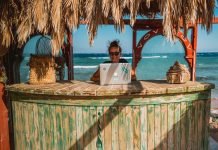
[Lee este artículo en español]
What used to be “Costa Rica’s forgotten corner,” the south Caribbean Coast, is now considered by many to be the country’s new golden egg.
In years past, serious impediments such as severely neglected roadways, construction delays, labor strikes, poverty, and—the elephant in the room—racism, all posed major obstacles for the autonomy and prosperity of the region.
Today, not all of these impediments have been tackled, but the times are definitely and rapidly changing. And with the government on board making multi-sector improvements, many believe the Caribbean is ripe for a renaissance.
The long-awaited regional overhaul has been targeting critical infrastructure and services, including the expansion and repair of the Braulio Carrillo Highway 32 and routes 36 and 256 connecting the capital, San José, to the Caribbean Coast and the Panamanian border.
With help from the United Nations Office for Project Services (UNOPS) and other partners, the Costa Rican Institute of Aqueducts and Sewers (AyA) is building better water treatment systems in targeted areas. UNOPS is also contributing to the construction of a new bi-national bridge (over 50% completed) between Costa Rica and Panama, complete with improvements to the immigration processing stations at the border town of Sixaola.

Other significant accomplishments in the works are the expanded installation of copper and fiber optic telecommunications networks in Limón Province that allow for the improved transmission of video, voice, and data files. And two small marine docks are in the works in Puerto Viejo and Cahuita that will provide local fishermen and tour providers the opportunity to expand their maritime enterprises as well as provide taxi-boat service between the two destinations and future service to Tortuguero and Bocas del Toro.
And last but not least, the Directorate General of Civil Aviation and the Technical Council of the Civil Aviation Authority authorized construction for a new passenger terminal at Limón Airport. Among the several upgrades, the $3 million investment will also provide separate processing areas for domestic and international passengers, enabling the airport to eventually receive international flights. A promising forecast for the region’s tourism industry if the plan reaches fruition.
The Caribbean – a niche market
“These infrastructure improvements are laying the groundwork for the sustainable development of the region,” says Christer Eriksson, co-owner of the iconic Koki Beach Restaurant in Puerto Viejo. “The south Caribbean is a gem in the rough and we need to take care of it. You won’t see any multinational hotel chains here; most are small, mom and pop businesses run by the people who live and work here.”

Despite the promising outlook brought on by government improvements, the region still faces some serious challenges as it looks towards the future.
First, Talamanca Canton—aka, the south Caribbean—is the second largest in the country but ranks as one of the poorest in the human development index. A lack of education (or access to) remains one of the most crippling factors facing the population. In addition to the many social problems this can cause, it makes it hard for businesses to find employees with the skills they need.
Second, maritime zoning and regulatory plans have yet to be formalized, leaving investors speculative about buying or developing in the area. Skeptics argue that further development of the coastal territory will dilute the social and cultural riches that make it unique.
On the other hand, those pushing for the regulatory plan’s release insist that it’s the only way to ensure that the land is developed correctly and that laws are in place to protect the environment and neighbouring communities, in addition to the businesses themselves – commonly referred to as its Seguridad juridical (legal security).
Article continues after ad:
“Besides agriculture, tourism is the motor that runs the whole canton,” explains Eriksson. “Yet you have to remember that approximately 88% of the territory is protected and can’t be developed. You’ll never see mass tourism here, which in actuality is good. The region needs to develop itself as a sustainable niche market.”
In fact, fifty-five percent of Talamanca land falls under the National Park System; 31% is dedicated to its four indigenous reserves, and 2% belongs to the Gandoca Manzanillo National Wildlife Refuge. The remaining 12% leaves precious little territory for growth –
land that needs to be developed wisely and conscientiously.
“The businesses that are serious about what they’re doing here are the ones that have succeeded,” insists Colin Brownlee, a long-time resident, entrepreneur, and owner of the ubiquitously popular Hotel Banana Azul. “And what the Caribbean needs is to do it right.”
“We believe in this region.”
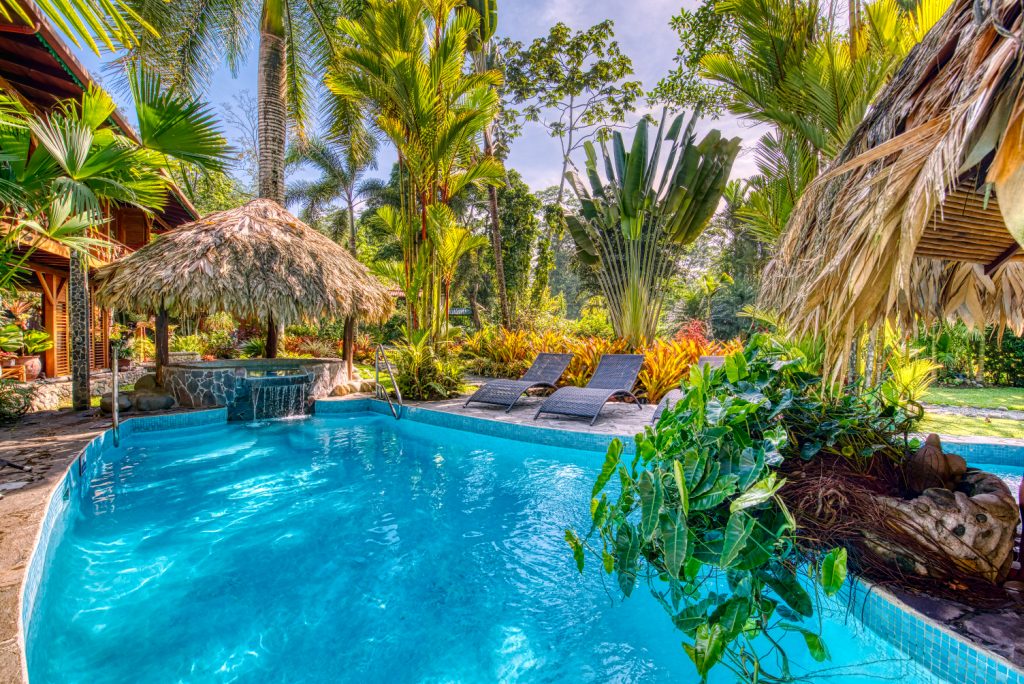
Brownlee explains that “the problem with the Caribbean these days isn’t that it’s being shunned anymore. On the contrary, the problem is that we can’t keep up with the demand. We run at 90% (or higher) occupancy year-round, and the biggest complaint I hear from travel agents is that the area doesn’t have enough quality rooms.” Agencies can not invest in a destination if they are not confident they can secure the rooms.
“People who come to Puerto Viejo come because they want something more adventurous and less predictable. It’s not just a ‘tanning and drinks on the beach’ crowd,” he adds. “In the past, we rarely saw national tourism down here. Nowadays, Puerto Viejo has become extremely popular among Ticos. They come here because they know they’re getting something authentic and organic.”
“If we can’t win at home, we can’t win abroad,” he says. “It’s great to see Costa Rican tourists side by side with foreigners. The guests love it. They help keep the destination busy all year around.”
Brownlee points out that there are considerable differences between the South Caribbean and Pacific Coast beach communities like Nosara or Samara, for example. “There’s a vibe in the Caribbean that communicates ‘everyone’s welcome,’ and this includes everyone from national tourists to backpackers to high-end boutique travellers. That’s not the case in several affluent Pacific beach communities that attract a relatively homogeneous, more well-off type of tourist and less diversity.”
What’s needed is to strengthen the region’s unique image and to become a leader and pioneer in the country’s growing sustainable ecotourism movement.
Eco-luxury makes its mark in South Caribbean
Although their numbers are few – high-end, sophisticated, and ecologically conscientious hotels have been operating in Limón Province for decades. Most are concentrated in and around the towns of Puerto Viejo, Cahuita, and Tortuguero, and many claim an important position in the country’s tourism industry.
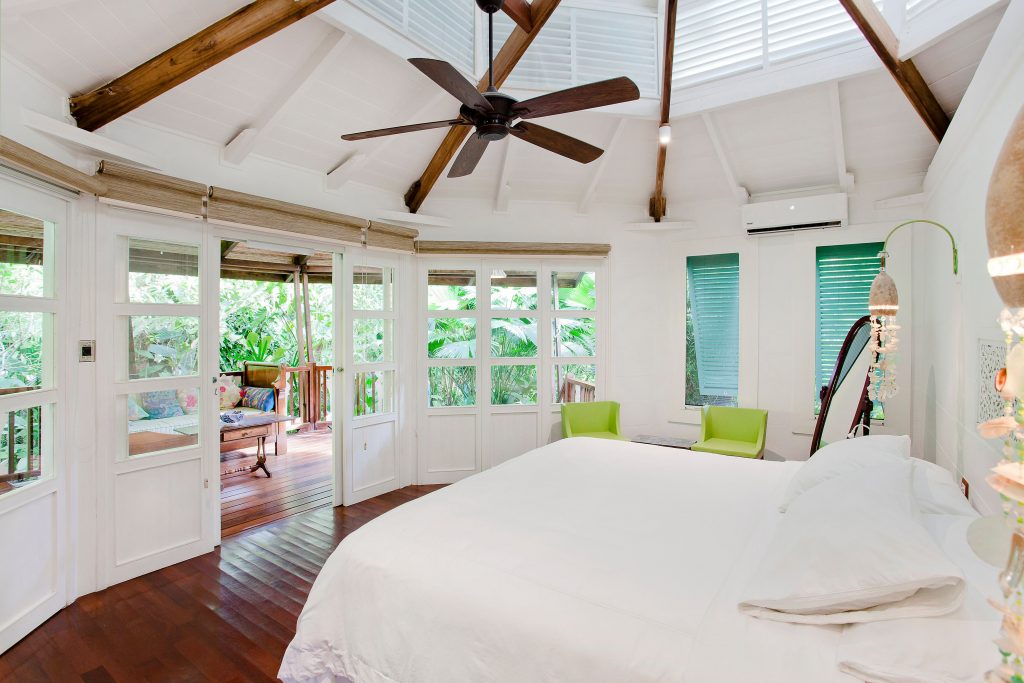
The arrival of the Cayuga Collection, a leader in hotel management, however, is drawing the recognition and endorsement that the country’s Caribbean region has been waiting for. The company, which has been operating in Central America since 1999, recently assumed management of one of Puerto Viejo’s most eclectic and contemporary hotspots, the Hotel Agua Claras.
“We’ve been looking for the right fit in the South Caribbean for a long time. We believe in this region,” said Hans Pfister, Cayuga Collection co-owner. “And Agua Claras is a stunning hotel; it’s quite literally a work of art.”
He also explained why his management firm’s sustainable business model is different from the competition.
“There are management companies, like the Four Seasons or JW Marriott, that know how to do luxury right, and there are management companies that know how to do ecological sustainability right. What sets us apart is how we bring the two together. It’s the ultimate symbiosis of sustainability and luxury.” He said, quoting the company’s trademark slogan.
Although you wouldn’t know it by looking, Cayuga doesn’t actually own the ten hotels, resorts, and lodges in their collection, they just manage them. Hans and his partner, Andrea Bonilla, and the rest of the Cayuga team, search for off-the-beaten-path hotel properties that fit their criteria of being independently owned and committed to cultural and ecological sustainability.
In most instances, Cayuga’s arrival on the scene represents a transformation of the property’s image and impact on the local community.
Community engagement is key
Part of the Cayuga strategy is to operate ahead of the curve. Their ten venues are located in Nicaragua, Costa Rica, and Panama within rural areas with small and diverse local communities. What follows once a location is chosen is the application of their sustainable business model which, among other qualities, focuses on the integration of the local community and culture in addition to implementing ecologically friendly methods of operation. Examples of the model’s application range from supporting community schools to the phasing out of single-use plastics and other non-renewable wastes.
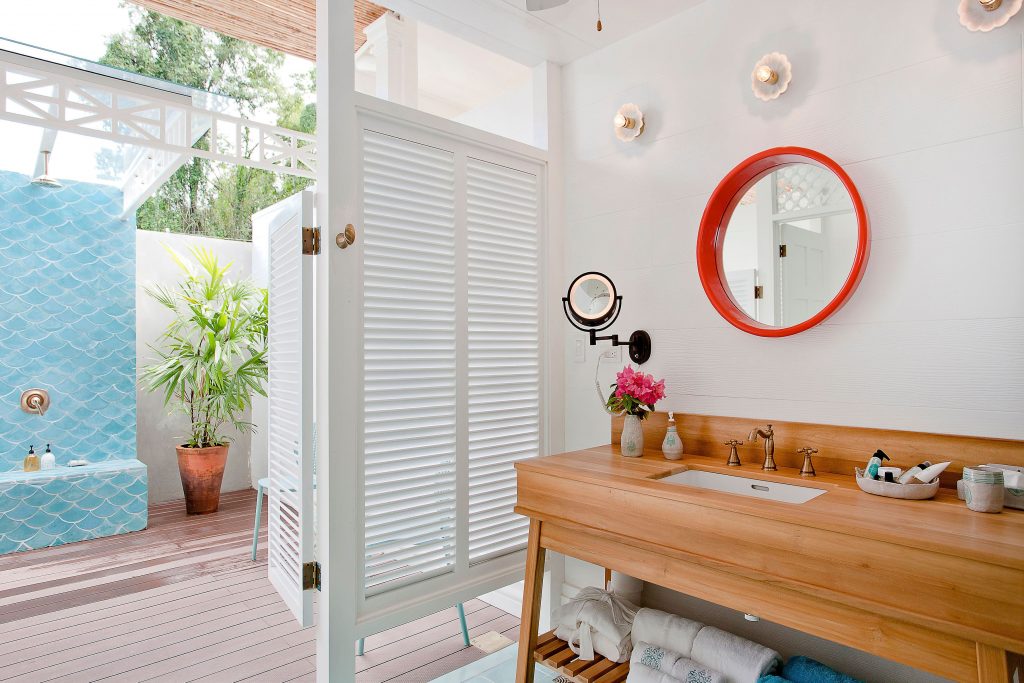
“We can’t operate on an island all to ourselves,” Pfister explains. Being sustainable means community engagement, and that means hiring and buying locally.
One of the first moves they made after acquiring Hotel Aguas Claras, was to formalize already existing community projects and to replace the imported ingredients from the menu with locally sourced alternatives. They also integrated local recipes and dishes to the menu that were at risk of disappearing. Their aim is to highlight the local culture, produce, and environment so that it becomes an integral part of each guest’s experience.
“Cayuga’s model helps reduce migration to the cities, provides valuable local employment, and engenders real pride within the local community. What Cayuga has achieved, by adding business value as well as social value to their communities and creating a sustainable framework, is truly inspiring,” said Fiona Jeffery OBE, Chair of Tourism for Tomorrow and Just a Drop.
Cayuga Collection won the 2018 Tourism for Tomorrow People Award over Cambodian and Australian finalists as well as the 2017 National Geographic World Legacy Award for Earth Changers in Berlin.
A diverse market with better values

Don’t be misled; several of Puerto Viejo’s and the region’s hoteliers are already deeply rooted in the local community, committed to buying locally, and promote ecological preservation. Visionary hotels like Le Cameleon Boutique Hotel and Hotel Banana Azul, have an impressive track record for appealing to a diverse market interested in ethical tourism.
What the Cayuga Collection’s arrival does, is to help showcase these notable efforts in the global tourism arena. In response to the present demand, Le Cameleon, which recently expanded, is now again in the beginning stages of enlarging the hotel, growing to 51 rooms also with expanded beachfront amenities.
There’s a ripple effect that we’ve seen in other communities where we operate,” Pfister explains. “We bring international attention to the region.” His recent interviews with internationally esteemed travel editors, including the New York Times, is an example of the calibre of attention he’s talking about.
The type of clientele interested in the Cayuga Collection are generally high-end luxury travellers that are well educated and conscientious, Pfister notes. The kind of traveller every country wants.
A cultural and ecological goldmine
Geographically speaking, the Atlantic Coast of Costa Rica offers less square mileage of tourism-developed territory than the Pacific side. However, with such cultural and ecological intensity, it’s quite unlike anywhere else in the country. Visitors are introduced to a blend of Afro-Caribbean, Indigenous, Latin, and international cultures, and have the opportunity to explore, hear, and taste each one.
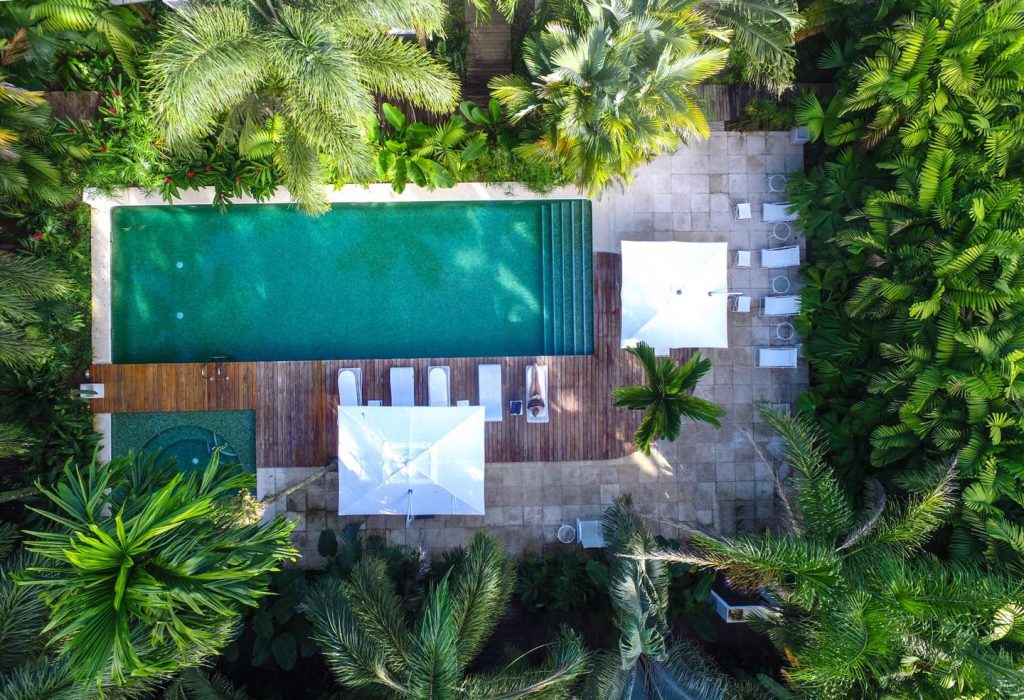
On any given day, the cadence of Mekatelyou, the Afro-Caribbean language, also known as Limónense, as well as Cabécar and Bribri Indigenous dialects, a Creole-laced English, Spanish, and a handful of worldly languages brought by expats can be heard. The culinary traditions also represent an equally rich blend of flavour and history. From the cultivation of the coveted cacao bean to coconut oil and Jamaican spice. The area is ripe for discovery.
And then there are the Parks. The biologically intense Caribbean lowlands are home to the world-renowned Tortuguero, Cahuita, La Amistad, and Chirripó National Parks, as well as the Gandoca Manzanillo National Wildlife Refuge, among several other reserves and refuges. Cahuita National Park is also the first national park in Costa Rica that provides disability access.
The lush rainforests, wetlands, canals, coral reefs, mangrove swamps, and coastal forests are home to multiple life zones and unique habitats harbouring tens of thousands of plant, bird, mammal, reptile, and insect species.
And like one long-time Puerto Viejo resident points out, “where else can you find so much to do and see within 30 square kilometres (Cahuita to Manzanillo)?” Nearly every eco-adventure Costa Rica offers can be found within this small geographical space, including world-class surfing, river rafting, scuba diving and snorkelling, turtle nesting, wildlife expeditions, canopy tours, ziplines, restaurants, accommodations, and expeditions into the Cabécar and Bribri indigenous territories.
The future looks bright

Getting to the southern Caribbean is much easier and faster than in the past. Costa Rica’s longtime domestic airline, Sansa, flies to the provincial capital of Limón three times per day, and there are two distinct routes to reach the destination by car. A senior Sansa representative confirmed plans of opening up Sansa flight service between popular Pacific Coast destinations and the Atlantic Coast are also on the drawing board. Sansa does not plan to stop there. Because Limón is an international airport and already has existing customs and immigration personnel, Sansa is planning to offer service to Bocas del Toro, as well as a new gateway to Costa Rica Caribbean route from mega-hub airport, Panama City. It should be noted Aerobell is also looking at adding Limón into their existing Bocas del Toro route. A good move, considering the Limón Airport expansion currently underway.
Furthermore, if you look at the big picture and imagine the ideal Caribbean vacation itinerary, the options are awe-inspiring. Combine nearby Bocas del Toro Islands—Panama’s second most popular destination—with Caribbean favourites like Braulio Carrillo National Park, the Sarapiquí rainforests and river rafting; Tortuguero National Park and it’s world-famous canals and sea turtles; Cahuita and Puerto Viejo with their pristine beaches, unmatched surfing, coral reefs, culture, and adventure; and top it off with a picturesque drive through the stunning mountainside beneath Turrialba Volcano, and… What more could you possibly ask for?
“All signs point to a positive future for the Caribbean,” says Brownlee. A positive future, indeed.





